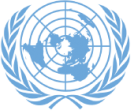Background
Brief history of the Republic of Congo
Upon independence in 1960, the former French region of Middle Congo became the Republic of the Congo. A quarter century of experimentation with Marxism was abandoned in 1990 and a democratically elected government installed in 1992. A brief civil war in 1997 restored former Marxist President SASSOU-NGUESSO, but ushered in a period of ethnic unrest. Southern-based rebel groups agreed to a final peace accord in March 2003. The Republic of Congo is one of Africa's largest petroleum producers with significant potential for offshore development.
Geographic information
Location
Western Africa, bordering the South Atlantic Ocean, between Angola and Gabon
Longitude & Latitude 1 00 S, 15 00 E
Area
total: 342,000 sq km land: 341,500 sq km water: 500 sq km
Climate
tropical; rainy season (March to June); dry season (June to October); constantly high temperatures and humidity; particularly enervating climate astride the Equator
Land use
arable land: 0.51%
permanent crops: 0.13%
other: 99.36% (2001)
Natural Resources
petroleum, timber, potash, lead, zinc, uranium, copper, phosphates, natural gas, hydropower
Economy
Overview
The economy is a mixture of village agriculture and handicrafts, an industrial sector based largely on oil, support services, and a government characterized by budget problems and overstaffing. Oil has supplanted forestry as the mainstay of the economy, providing a major share of government revenues and exports. In the early 1980s, rapidly rising oil revenues enabled the government to finance large-scale development projects with GDP growth averaging 5% annually, one of the highest rates in Africa. The government has mortgaged a substantial portion of its oil earnings, contributing to a shortage of revenues. The 12 January 1994 devaluation of Franc Zone currencies by 50% resulted in inflation of 61% in 1994, but inflation has subsided since. Economic reform efforts continued with the support of international organizations, notably the World Bank and the IMF. The reform program came to a halt in June 1997 when civil war erupted. Denis SASSOU-NGUESSO, who returned to power when the war ended in October 1997, publicly expressed interest in moving forward on economic reforms and privatization and in renewing cooperation with international financial institutions. However, economic progress was badly hurt by slumping oil prices and the resumption of armed conflict in December 1998, which worsened the republic's budget deficit. The current administration presides over an uneasy internal peace and faces difficult economic problems of stimulating recovery and reducing poverty.
GDP:
purchasing power parity - $2.148 billion (2004 est.)
GDP Per Capita
purchasing power parity - $700 (2004 est.)
GDP By Sector
agriculture: 6.9%
industry: 53.9%
services: 39.2% (2004 est.)
Government
Structure
Republic
Capital
Brazzaville
Independence
15 August 1960 (from France)
People
Population
2,998,040
note: estimates for this country explicitly take into account the effects of excess mortality due to AIDS; this can result in lower life expectancy, higher infant mortality and death rates, lower population and growth rates, and changes in the distribution of population by age and sex than would otherwise be expected (July 2004 est.)
Ethnic Groups
Kongo 48%
Sangha 20%
M'Bochi 12%
Teke 17%
Europeans and other 3%
note: Europeans estimated at 8,500, mostly French, before the 1997 civil war; may be half that in 1998, following the widespread destruction of foreign businesses in 1997
Languages
French (official)
Lingala and Monokutuba (lingua franca trade languages)
many local languages and dialects (of which Kikongo is the most widespread)



